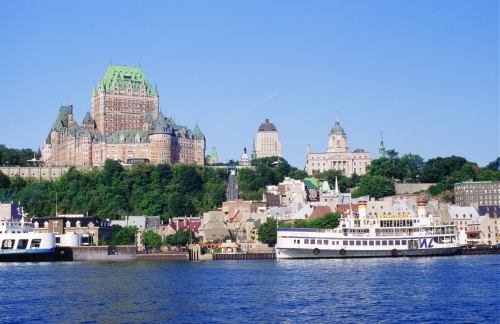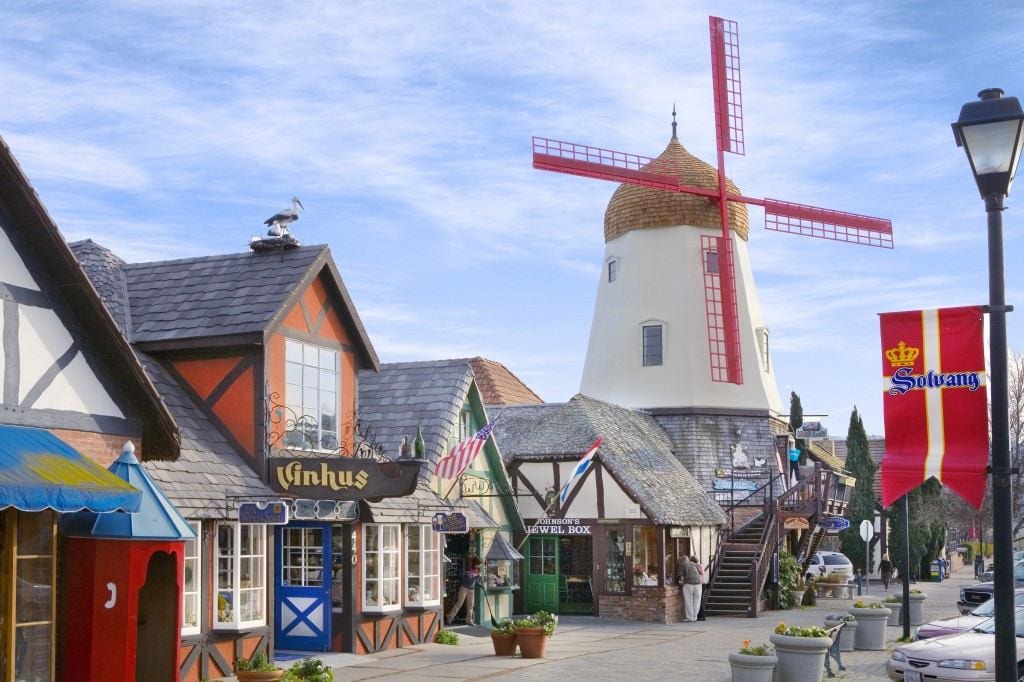You don’t have to travel far to immerse yourself in a foreign culture. There are communities all across the U.S. and Canada that have international flair, so you don’t have to spend a lot on overseas flights or high exchange rates.
Tarpon Springs is a Greek Mediterranean village on the northern tip of the St. Pete/Clearwater area. It’s believed to have the highest percentage of Greek Americans in the U.S.
In the 1890s, Tarpon Springs entrepreneur John Cheyney encouraged Greek sponge divers to investigate the fertile sponge beds off the coast. In 1905, a New York sponge buyer, John Cocoris, brought 500 divers to Tarpon Springs from the Greek islands and introduced the first mechanized sponge fishing boat.
By 1905, the Greek population had grown to more than 500, with some 200 sponge boats in operation.
Sponge fishing remains a part of Tarpon Springs’ present economy. It still has the feel of an old Greek seaside village with a dozen Greek restaurants and bakeries (baklava!), old sponge divers on the docks, community festivals, music, and the 1943 Greek Orthodox Cathedral.
Quebec Province (Montreal – Three Rivers – Quebec City – Charlevoix)
Everyone thinks of Montreal as a city with international flair, and it’s true. Locals speak French, signs are in French, and the architecture is very Euro. So spend a few days exploring, and then start driving along the St. Lawrence River to get even more immersed in the French-Canadian culture.
On the way to Quebec City is the little town of Three Rivers (Trois-Rives). It’s the second oldest city in Quebec. Get a sense of the city’s age through a walking tour of old working class neighborhoods.
Then go to Quebec City, the only fortified city in North America north of Mexico, with 4.6 km of walls and imposing gates. Old Québec is considered UNESCO World Heritage Treasure. The center displays centuries-old architecture and historic sites. Locals add European charm to the city through horse-dawn carriages, street entertainers, singers, artists, and the open-air art gallery in Rue du Trésor.
Then, keep going east to a place you may not have heard of: Charlevoix. It offers skiing like the Alps, incredible dining, and a beautiful natural landscape where locals can go hiking and kayaking.
New Glarus, Green County, Wisconsin
Where do you think Wisconsin gets its love of cheese? The Swiss, of course.
The original Swiss immigrants came to Wisconsin in the mid-19th century from Glarus in central Switzerland. The area was in a famine, so immigrants came to the New World and discovered the rich land of Wisconsin.
New Glarus is “America’s little Switzerland,” but surrounding communities like Monroe also have a Swiss flair.
Green County is the “cheese lovers in paradise” destination in southern Wisconsin. It’s thought to have the largest concentration of cheese makers in America (which is a lot considering it’s in Wisconsin). It’s home to the last remaining Limburger cheese factory in North America.
The region’s Swiss heritage is complete with rolling dairy lands, locally made beer, homemade sausages, old world bakery and Swiss restaurants, chalet-style buildings, and Swiss street names.
More than 160 years after it was founded, New Glarus still maintains it Swiss heritage and old world traditions. You’ll see Swiss-style chalets with flower boxes, Swiss flags, traditional meat markets, Swiss restaurants and bakeries. It’s also home to the Swiss Center of North America.
Locals maintain their traditions—even yodeling lessons and flag tossing—and still play the card game Jass.
Major stops include New Glarus Brewing, Maple Leaf Cheese and Chocolate Haus, New Glarus Bakery, and Puempel’s Olde Tavern Inn.
Solvang, California
Solvang is located in the Santa Ynez Valley in Santa Barbara County. In January, 1911, the Danish-American Colony corporation bought almost 10,000 acres of prime land in the Santa Ynez Valley, California.
Solvang, founded in 1911, began as a dream of three Danish immigrants: Reverend Benedict Nordentoft, Reverend J. M. Gregersen, and Professor P. P. Hornsyld. They planned to raise money to buy a large tract of land on the West Coast and subdivide it into plots for farms, homes, and a town for Danish immigrants. Profits from the sale of land would be used for building a Danish-style folk school. Also planned was a Lutheran church.
Today, you’ll still see windmills and Danish shops, a copy of the famous Little Mermaid statue from Copenhagen, and bust of Hans Christian Andersen. The Elverhøj Museum is dedicated to preserving Danish culture and arts. Grab a traditional kringle or butter ring at Olesen’s Danish Village Bakery or Solvang Bakery.
The 78th annual Danish Days is coming up in September. The festival is what put Solvang on the map in 1946, when a reporter from the Saturday Evening Post wrote about the event, calling it “a spotless Danish village.”
Today, it’s food and wine central, so it’s also a destination in its own right, with respected chef-driven restaurants, winemakers, brewers, and chocolatiers.
Richmond, British Columbia
Even if you’ve never heard of it, if you’ve been to Vancouver, you’ve been to Richmond. That’s where Vancouver International Airport is located. But what you may not know is that Richmond is considered THE North American destination for Asian cuisine and culture.
Sixty-five percent of the population is Asian, forty-four percent are of Chinese ancestry, and it also has significant South Asian, Japanese, and Filipino communities. The top three countries for recent immigrants to Richmond are Hong Kong, China, and Taiwan.
There are more than 400 authentic Asian restaurants, 200 of which are on Alexandra Road, aka “Food Street” or “Wai Sek Kai.” We’re talking Cantonese, Szechuan, Shanghainese, Northern Chinese, Thai, Vietnamese, Korean, and Malaysian. This includes the ever-popular boba tea and Chinese teas.
In summer, Richmond hosts two Asian-style night markets. The Summer Night Market is perhaps the biggest multicultural event in Canada, and the Richmond Night Market was just established in 2012. There is plenty of street food, shopping, and music.
Just minutes from city center, the International Buddhist Temple is the second largest in North America. It was officially opened in 1983, designed for Buddhists to have an authentic Chinese temple in which to study and practice Chinese Mahayana Buddhism. Thrangu Monastery was based on the ancient monasteries at Nalanda and Odantapuri.

















